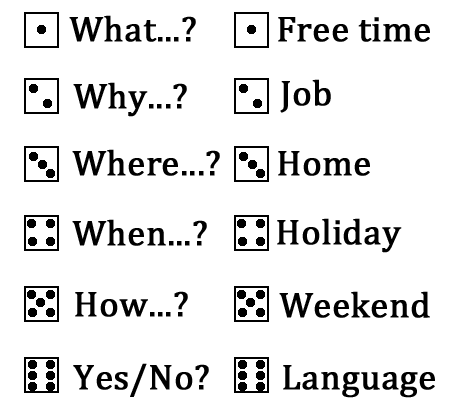Just finished participating in my first-ever webinar, and this experience left quite a positive impression!
I must say I love using games in my classroom. I think it makes students happier and engages them more. I love watching them getting emotional and having fun while speaking English and revising what they have learnt. So I say a big YES to the games. No wonder a webinar with such a catchy title attracted me, huh? 🙂 Another reason to join was the name of the presenter (John Hughes) and the fact that it was organised by OUP, ‘the world’s authority on teaching English’ (as Gareth Davies, the moderator, said).
Here’s a brief summary of what John talked about.
First of all, when you choose or create a game, consider:
– preparation time vs classroom time
(you don’t want to spend 2 hours preparing a game that only lasts 10 minutes, do you?)
– easy vs difficult set-up
(make sure it doesn’t take too much time to set the game up and that it’s easy enough for students to understand the rules)
– how much language does it generate?
(our main goal is learning after all, right?)
– does it make students forget they’re ‘learning’ English?
(no one cancelled the fun element 🙂 )
Second, make sure that it complies with the 5 C’s:
- Chance
- Challenge
- Collaboration
- Competition
- Communication
I’ll tell a bit more about each of these key features below.
1. Chance
It means the game has to have an element of surprise, a chance. Technically, it’s any game with dice/coin/paper ball. Students roll/ toss/throw it, and it determines what’s gonna happen next.
Examples: Dices

Students roll 2 dices and then ask each other questions, for example, 2:4 means they have to ask any Why question about holidays. It’s easy to adjust this game to your students’ needs so I’ll definitely give it a go when I have a chance!
If you don’t have enough dices, simply ask your students to download some free dice app – I bet they’ll love the chance to use their smartphones during this game 😀
You can also use Rory’s Story Cube (more about it in this post by Gareth Davies) or dominoes (John showed us a nice game where students have to match words with their stress patterns).
2. Challenge
A game has to be difficult enough to enable students to make some effort to win – otherwise it’s simply going to be boring.
Examples: Pelmanism (aka Memory Game), Charades, etc.
3. Collaboration
It’s always more fun to work in teams, right? And it also contributes to a positive atmosphere in the classroom.
Examples: Information gap crosswords (you can create your own here), Treasure Hunt (Nicky Hockly wrote an amazing post where she shared a treasure hunt game with the use of QR-codes).
4. Competition
Not all students are competitive, that’s true, but nevertheless, who doesn’t like being a winner?
Think how you’re going to score the game. Points? “Money”? Or even tennis scoring? Feel free to choose!
I often use checksheets, and they students check how many points they got. Or, for example, I also used “money” for the boardgame my students were playing in their last lesson. I bought several packs of fake 1000 yen banknotes and gave them to the students. They were super excited, especially those who majored in Business 😀
For technology fans, there’s Quizlet’s Gravity game – make sure to try it out!
5. Communication
Games are a type of drill since many games provide this repeated use of a language form. The difference is that games add challenge, competition, and entertainment to the process.
Example: Snakes & Ladders or any other conversation-based boardgame.
If you want to know a little bit more about using games in ELT, check out John Hughes’ post!
great post and summary of the webinar ( I also attended it and enjoyed reading your summary). Thanks for sharing.
Thank you!